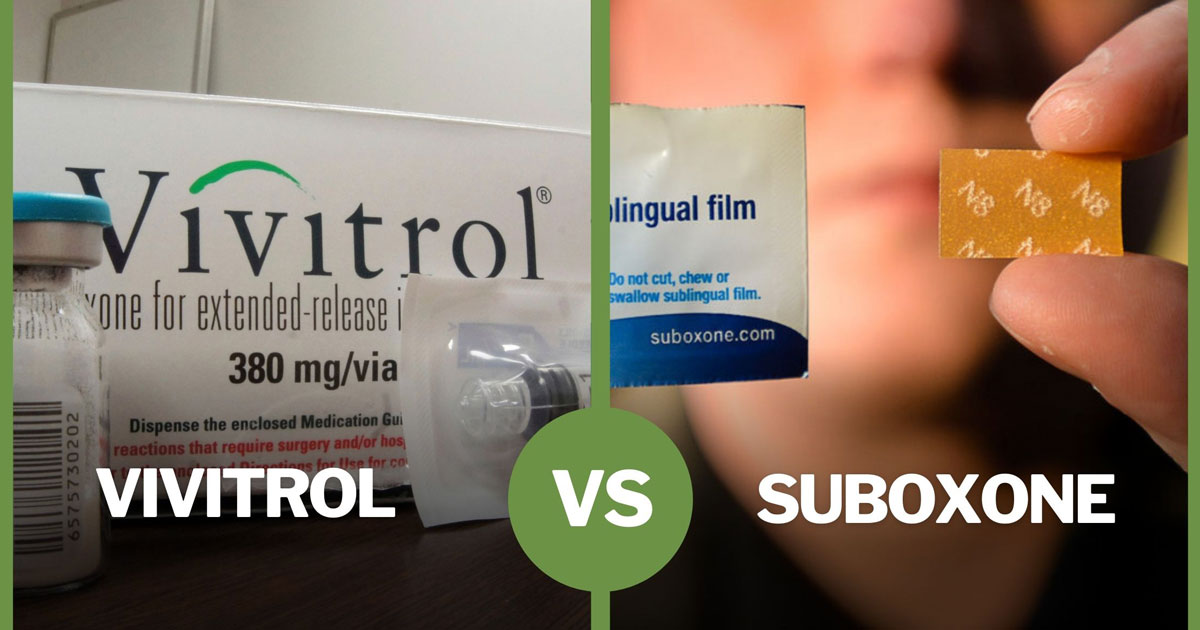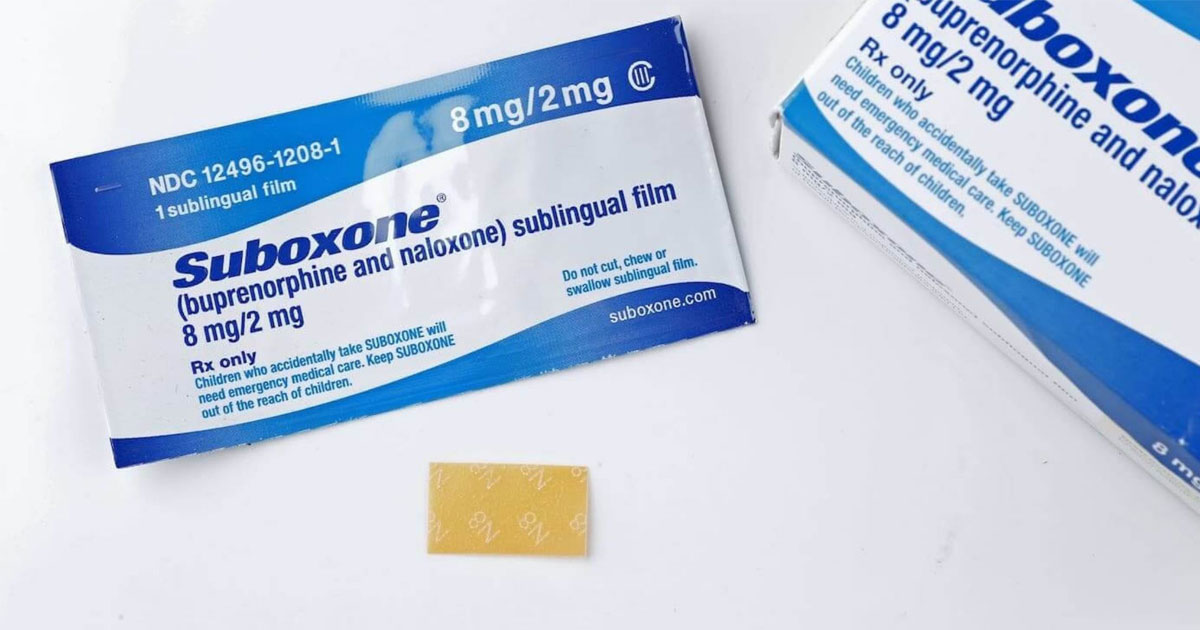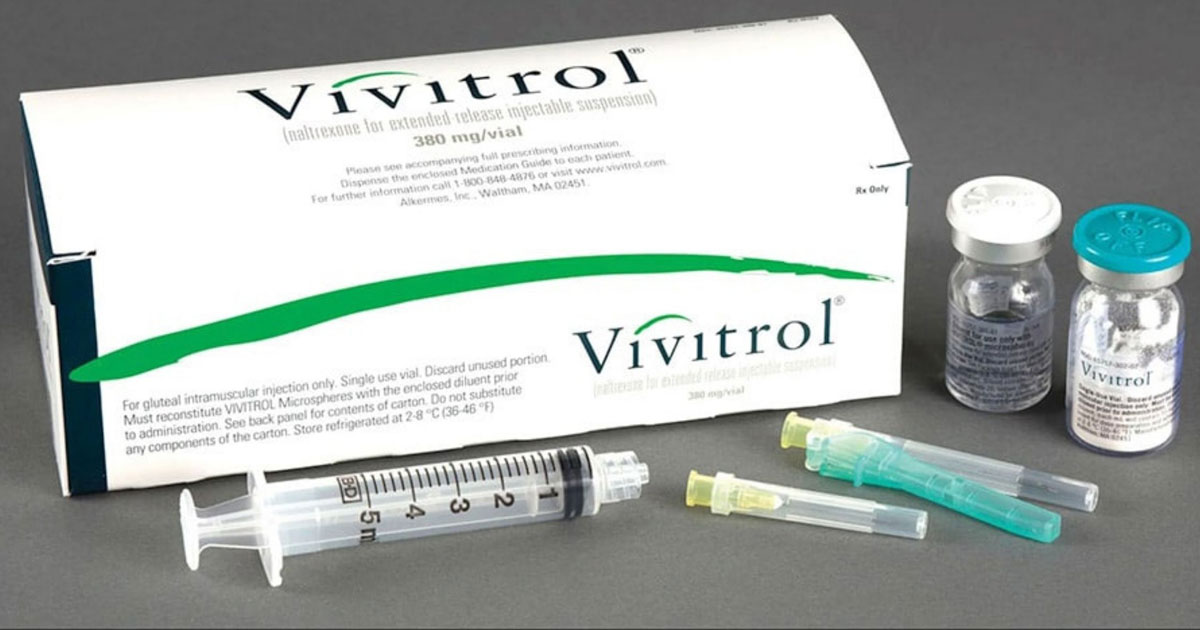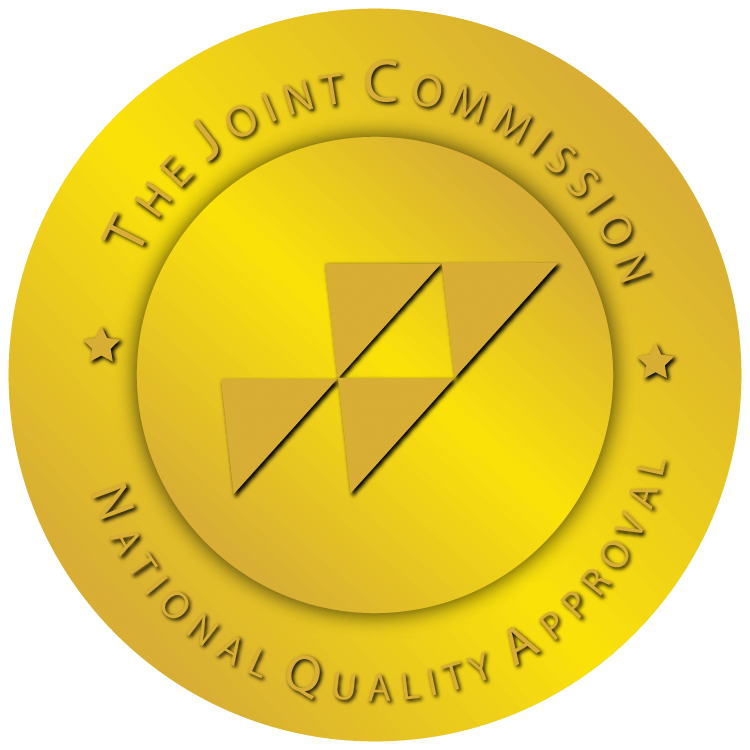
Suboxone and Vivitrol are both effective medications used to treat substance use disorders (SUDs). Many healthcare professionals, rehab facilities, and other SUD treatment programs use both medications frequently while treating patients with SUD. These medications must be used in conjunction with a broader treatment plan that includes psychotherapy, counseling, and other therapies, as there is little evidence of enduring advantages for patients who only use these medications as a detoxification aid without other components of treatment to support recovery.
Suboxone and Vivitrol are not the same medication. Suboxone contains buprenorphine, a partial opioid agonist that mildly activates brain receptors, as well as naloxone, which reduces cravings and withdrawal symptoms associated with opioid use disorder. Vivitrol is the brand name for naltrexone, an opioid antagonist that blocks opioid receptors and is used to prevent relapse during opioid and alcohol use disorders.
Both medications can be used as part of a medication-assisted treatment (MAT) plan, but they have different mechanisms of action and are used at different stages of recovery. It is important to talk to a healthcare provider about the most appropriate treatment for your SUD and whether the treatment plan includes the use of Suboxone, Vivitrol, or another method of treatment altogether. Treatment should not, however, include both medications at the same time, as this is a dangerous combination, explained in more detail below.
While Suboxone and Vivitrol are both medications used to treat opioid use disorder or OUD, they work in different ways and are different in how they are administered. To understand these differences is to understand how each of these medications affects the brain. A description of each medication and its dosing protocols follows.
Suboxone

Suboxone is a prescription medication used to treat opioid addiction. Suboxone works by combining two active ingredients, buprenorphine and naloxone. These drugs work together to reduce cravings and mitigate withdrawal symptoms. Buprenorphine is a partial opioid agonist, which means it partially activates opioid receptors to produce a weaker effect than full agonists like heroin and prescription pain medication.
Thus, it can lessen the severity of cravings, as well as withdrawal symptoms. Naloxone is a compound known as an opioid antagonist that prevents opioids from interacting with opioid receptors in the brain and was added to buprenorphine to prevent misuse of the medication. Naloxone is also used in emergency situations to reverse an overdose in patients who consumed too much opioid medication.
Suboxone is typically taken once daily as a sublingual tablet, which is taken orally and placed under the tongue or in the cheek. There, it dissolves and is absorbed through the thin skin and into the bloodstream. It is best used as part of a comprehensive treatment plan that includes other approaches to recovery, including behavioral therapy, counseling, holistic therapies, and/or other support services. Suboxone must be prescribed by a doctor who is authorized to monitor appropriate use and calculate proper dosage.
Vivitrol

Vivitrol is the brand name of the extended-release form of a medication called naltrexone. It is used to treat alcohol and opioid dependence by blocking the effects of opioids and reducing cravings for alcohol. Unlike other medications used to treat SUD, such as methadone and buprenorphine, Vivitrol is not an opioid and does not produce any euphoric effects. It works by binding opioid receptors in the brain and blocking the effects of opioids. Thus, receptors are unavailable for activation by any type of opioid that is self-administered, such as heroin.
Vivitrol is administered to patients as a monthly injection and used to prevent relapse to opioid use after detoxification. Vivitrol is also FDA-approved to treat alcohol use disorder. It is typically used as part of a comprehensive treatment program that includes counseling and behavioral therapy.
Suboxone vs. Vivitrol Quick Facts
- Suboxone treats only opioid use disorder, while Vivitrol also treats alcohol use disorder. Suboxone is only approved by the FDA to treat opioid use disorder.
- Suboxone must be taken daily and dissolved orally; Vivitrol is administered once per month via injection by a healthcare provider.
- Suboxone helps with withdrawal symptoms because it can be started before opioids have completely left the system; Vivitrol can only be administered after 7 to 14 days of opioid abstinence and does not treat withdrawals.
- Suboxone must be tapered off when ceasing use to prevent medication withdrawal. Vivitrol can be stopped without withdrawal, as it does not cause dependency.
- Suboxone is an opioid and classified as a partial opioid agonist; Vivitrol is not an opioid and is an opioid antagonist.
Suboxone vs. Vivitrol for Addiction Recovery
Because Suboxone helps with withdrawal, it is the better choice for many patients. However, if a patient has at least seven days of no opioids in their system, it may be that Vivitrol is the better option because it helps manage cravings, does not cause withdrawal itself, and has limited side effects. Additionally, for individuals who also struggle with alcohol use disorder, it may be the better of the two medications.
Further, Vivitrol is typically used in inpatient rehab facilities where there is no outside opioid access. Vivitrol can also be useful in patients who have successfully and fully tapered off Suboxone to prevent cravings for opioids thereafter. The reason for this is that it is extremely dangerous to take Vivitrol with Suboxone or any other opioid in the system.
Furthermore, once a dose of Vivitrol is received via injection, its opioid-blocking effects diminish over time and eventually will completely go away. This leaves the opioid receptors unblocked and especially vulnerable to opioids. For patients who have used opioids in the past, taking the same dose they used to take before receiving Vivitrol can result in overdose and possibly death.
Mixing Medications
Suboxone and Vivitrol should not be taken together. They have different mechanisms of action and can lead to adverse effects if taken together. Because Vivitrol is an opioid blocker, it blocks the effects of opioids like prescription pain medication and heroin. If patients attempt to overcome these blocking effects by taking substantial amounts of any type of opioids, they run the risk of coma or even death by overdose.
Individuals who have taken opioids prior to Vivitrol treatment can become significantly more sensitive to the effects of opioids and at lower amounts than before Vivitrol. This is especially true after detoxification, before the next dose of Vivitrol is due, upon missing a dose of Vivitrol, or after Vivitrol treatment ends. Patients who have experienced any of these situations should notify close family and friends of their potential increased sensitivity to opioids to prevent overdose.
Additionally, taking Vivitrol while still on Suboxone can cause sudden opioid withdrawal symptoms. For this reason, individuals must be opioid-free for 7 to 14 days prior to taking Vivitrol. Using opioids within 7 to 14 days before starting Vivitrol can cause severe opioid withdrawal upon receiving the Vivitrol injection.
Withdrawals can be so intense that hospitalization may even be necessary, so it is crucial for patients to be mindful of this potential risk. It is always important to follow the instructions of a healthcare professional and never mix medications without medical supervision. Finally, benzodiazepines like Xanax should never be taken with Suboxone. This combination can lead to respiratory failure and even death.
Suboxone and Vivitrol Used in Medication-Assisted Treatment
Both Suboxone and Vivitrol are used in medication-assisted treatment (MAT) that aims to reduce the harm associated with opioid use and discontinuation. The medications can also prevent relapse when used within a more complex treatment plan administered by a healthcare professional.
What Is MAT?
MAT is an evidence-based approach to treating substance use disorders that uses medications in combination with behavioral therapy and support to address the physical and psychological effects of SUD. MAT is frequently used to treat opioid use disorder, alcohol use disorder, and even nicotine use disorder.
The medications used in MAT are designed to help reduce cravings and withdrawal symptoms associated with substance use disorders. Many also help to block the effects of drugs when used. These mechanisms can help individuals stay engaged in treatment, reduce the risk of relapse, and improve outcomes for long-term recovery.
While medications are an important part of MAT, they should be considered just one component of a more comprehensive treatment plan that also includes behavioral therapies and support. MAT aims to help individuals achieve and maintain recovery from substance use disorders and improve their overall well-being. It is important to speak with a treatment professional about the potential benefits and risks of using MAT as a part of a comprehensive treatment plan, as well as other treatment options that may be available.
Suggested Reading: Vivitrol and Suboxone for MAT
Use of Vivitrol for MAT
Vivitrol can be used as the medication component of MAT for both opioid use disorder and alcohol use disorder. When used as part of a MAT regimen, it is important to note that Vivitrol can only be used after detoxification. It is not a medication that can be used for detox or to subdue withdrawal symptoms.
Use of Suboxone for MAT
Suboxone can also be used as a medication-assisted treatment (MAT) for opioid use disorder. When used as part of a MAT regimen, Suboxone can both prevent withdrawal and reduce cravings. It can be used during detoxification.
Maryland Recovery for Medication-Assisted Treatment

Maryland Recovery offers long-term outpatient treatment programs and sober housing for individuals suffering from SUD. Maryland Recovery has been helping individuals find lifelong recovery since 1999. Our dedicated medical professionals are trained in administering both Suboxone and Vivitrol during a medication-assisted treatment program.
For more information or to make an appointment, contact Maryland Recovery admissions.
References:
- https://nosorh.org/wp-content/uploads/2017/05/Access-to-MAT-by-state.pdf
- https://nida.nih.gov/publications/research-reports/medications-to-treat-opioid-addiction/references
- https://nida.nih.gov/publications/research-reports/medications-to-treat-opioid-addiction/naloxone-accessible
- https://nida.nih.gov/publications/research-reports/medications-to-treat-opioid-addiction/how-much-does-opioid-treatment-cost
- https://nida.nih.gov/publications/research-reports/medications-to-treat-opioid-addiction/efficacy-medications-opioid-use-disorder

A solution focused therapist with over a decade in the helping services, I am attuned to the broad expanse of holistic recovery. My mission is inspired by the work of Joseph Campbell, Dr. Wayne Dyer, and Fr. Joseph Martin. I am well versed in the specific needs of the recovery community and am trained in EMDR.








